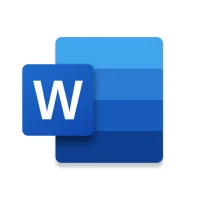How cloud computing is influencing mobile apps
41 min read Mobile cloud computing combines the power of cloud computing with mobile devices. It allows you to access applications and services through the internet without relying on the limited resources of your device.written by Wiliam Ihsan, Content Creator July 30, 2024 15:01
Image Source: pexels
Cloud computing has revolutionized how you interact with mobile apps. It allows developers to create scalable and flexible applications that adapt to your needs. Teams can now collaborate remotely, speeding up app development and fostering innovation. This technology enables faster app updates and seamless deployment across devices, ensuring better performance. Businesses save costs by paying only for the resources they use. From e-commerce to healthcare, cloud computing has driven a surge in innovative apps, making your experience smoother and more efficient.
Key Takeaways
- Cloud computing helps mobile apps grow with user needs. It keeps apps running well, even when many people use them.
- Developers save money by paying only for what they use. This also helps them create apps faster without big upfront costs.
- You can get your data anytime and anywhere. This makes using mobile apps easier and better for you.
- Cloud computing lets apps work on different devices smoothly. You won’t lose your progress when switching devices.
- New tech like AI, edge computing, and 5G will make apps smarter, quicker, and more useful.
Understanding Cloud Computing in Mobile Apps
What is Mobile Cloud Computing?
Mobile cloud computing combines the power of cloud computing with mobile devices. It allows you to access applications and services through the internet without relying on the limited resources of your device. This technology uses several key components to deliver a seamless experience:
- Offloading: Transfers heavy processing tasks to the cloud, improving your device's performance.
- Distribution: Shares resources and data across multiple platforms, ensuring accessibility.
- Privacy: Protects your data while you use cloud-based services.
The architecture behind mobile cloud computing includes regional data centers, wireless core networks, and base stations. These components work together to ensure you can use apps efficiently, no matter where you are.
How Cloud Computing Powers Mobile Apps
Cloud computing provides the backbone for many mobile apps by offering essential services and tools. For example, cloud-based APIs enable developers to integrate advanced features into apps. Here are some examples:
Additionally, cloud computing allows apps to scale resources based on demand. This ensures you experience smooth performance even during peak usage. The pay-as-you-go pricing model also helps developers optimize costs, making app development more efficient.
Real-World Examples of Cloud-Powered Mobile Apps
Many popular apps rely on cloud computing to deliver their services. For instance:
These apps demonstrate how cloud computing enhances functionality and accessibility. By leveraging the cloud, they provide you with reliable and convenient services.
Benefits of Cloud Computing for Mobile Apps

Image Source: pexels
Scalability and Flexibility for Growing User Demands
Cloud computing empowers mobile apps to adapt to your needs effortlessly. When user demand increases, apps can scale up their resources to maintain smooth performance. During quieter periods, they can scale down to save costs. This flexibility ensures you always experience consistent functionality, no matter how many users are active.
- Mobile apps can adjust resources automatically based on demand, ensuring seamless performance during peak usage.
- Businesses can meet dynamic market demands with scalable and globally accessible cloud-based solutions.
- Cloud infrastructure allows apps to grow alongside your needs, offering a reliable and uninterrupted experience.
This scalability not only enhances your experience but also positions businesses to thrive in a competitive market.
Cost Efficiency in Development and Maintenance
Cloud computing reduces the financial burden of app development and maintenance. You benefit from apps that are built faster and maintained more efficiently. Developers can focus on creating innovative features instead of worrying about infrastructure costs.
- Businesses avoid large upfront investments in hardware by using a pay-as-you-go model.
- Developers can adjust resources like storage and processing power as needed, optimizing costs.
- Cloud providers handle updates and maintenance, reducing operational expenses.
This cost efficiency enables businesses to deliver high-quality apps while keeping expenses under control. It also fosters innovation by freeing up resources for creative development.
Enhanced User Experience Through Seamless Data Access
Cloud computing ensures you can access your data anytime, anywhere. Whether you're switching devices or working on the go, your information remains synchronized and readily available. This seamless access enhances your overall experience with mobile apps.
- Cloud storage allows you to retrieve data instantly, regardless of your location.
- Apps can synchronize data across multiple devices, ensuring continuity in your tasks.
- Real-time updates keep your information current, improving functionality and reliability.
By leveraging cloud computing, mobile apps provide you with a smoother, more connected experience. This technology eliminates barriers, making your interactions with apps more efficient and enjoyable.
Faster Development and Deployment Processes
Cloud computing accelerates how developers create and launch mobile apps. It provides tools and platforms that simplify the development process. You no longer need to wait for lengthy updates or fixes. Developers can make changes quickly and push them to users in real time.
One way this happens is through cloud-based development environments. These platforms allow developers to collaborate from anywhere. They can write, test, and debug code without needing powerful local machines. This speeds up the entire process. For example, services like AWS and Google Cloud offer pre-built templates and APIs. These tools reduce the time it takes to build complex features.
Another advantage is continuous integration and deployment (CI/CD). With CI/CD pipelines, developers can automate testing and deployment. This ensures that apps remain stable and updated. You benefit from faster bug fixes and new features without delays.
Cloud computing also eliminates the need for physical servers. Developers can deploy apps directly to the cloud. This reduces downtime and ensures a smoother launch. As a user, you experience fewer interruptions and quicker access to updates.
Tip: Apps built with cloud computing often receive updates more frequently. This keeps your experience fresh and reliable.
Cross-Platform Compatibility and Accessibility
Cloud computing makes mobile apps accessible across different platforms. Developers no longer need to create separate versions for iOS, Android, or other systems. Instead, they can build one app that works everywhere. This saves time and ensures a consistent experience for you.
Cloud-based apps store data and processes on remote servers. This means you can access the same app on multiple devices without losing progress. For instance, you can start a task on your phone and finish it on your tablet. The app will look and function the same on both devices.
Another benefit is compatibility with older devices. Since most of the processing happens in the cloud, your device doesn’t need high-end hardware. This makes apps more inclusive and accessible to a wider audience.
Note: Cross-platform compatibility ensures that you can use your favorite apps regardless of the device you own.
Cloud computing also supports web-based apps. These apps run directly in your browser, eliminating the need for downloads. You can access them instantly, making them convenient and user-friendly.
Challenges of Cloud Computing in Mobile Apps
Addressing Security and Privacy Concerns
Security and privacy remain significant challenges in cloud computing for mobile apps. When you use cloud-based apps, your data often travels across networks and gets stored on remote servers. This increases the risk of breaches and unauthorized access. A survey highlights the most common concerns organizations face:
To address these issues, developers implement encryption, multi-factor authentication, and regular security audits. These measures protect your data and ensure compliance with regulations.
Overcoming Internet Dependency
Cloud-powered mobile apps rely heavily on internet connectivity. Without a stable connection, you may experience interruptions or limited functionality. This dependency can be frustrating, especially in areas with poor network coverage. Developers tackle this challenge by incorporating offline modes and caching mechanisms. These features allow you to access essential app functions even when you're offline.
Content delivery networks (CDNs) also play a crucial role. They reduce latency by delivering data from servers closer to your location. This ensures faster loading times and a smoother experience, even with slower connections.
Compatibility with Legacy Systems
Integrating cloud computing with older systems can be complex. Many businesses still use legacy systems that lack the flexibility to connect with modern cloud-based apps. This creates compatibility issues, making it harder for developers to provide seamless experiences.
To overcome this, developers use middleware solutions and APIs. These tools act as bridges, enabling communication between old and new systems. By addressing compatibility challenges, developers ensure that you can enjoy the benefits of cloud-powered apps without disruptions.
Note: While cloud computing offers numerous advantages, addressing these challenges is essential for delivering reliable and secure mobile apps.
Managing Latency and Performance Issues
Latency and performance issues can disrupt your experience with cloud-powered mobile apps. Latency refers to the delay between your action and the app's response. High latency can make apps feel sluggish, especially when you rely on real-time features like video calls or online gaming. Performance issues, on the other hand, can cause apps to crash or load slowly, frustrating you as a user.
To manage these challenges, developers use several strategies:
- Content Delivery Networks (CDNs): CDNs store app data on servers closer to your location. This reduces the time it takes for data to travel, improving loading speeds.
- Edge Computing: By processing data near your device instead of a distant cloud server, edge computing minimizes delays. This ensures faster responses for time-sensitive tasks.
- Load Balancing: Developers distribute app traffic across multiple servers. This prevents any single server from becoming overwhelmed, maintaining smooth performance.
- Caching: Apps temporarily store frequently used data on your device. This reduces the need to fetch data from the cloud repeatedly, speeding up your interactions.
Tip: If you experience slow performance, check your internet connection. A stable network often improves app responsiveness.
Developers also monitor app performance using analytics tools. These tools identify bottlenecks and optimize processes to enhance your experience. For example, they might adjust server configurations or update app code to reduce latency.
By addressing latency and performance issues, cloud-powered apps deliver a smoother and more reliable experience. These efforts ensure you can enjoy your favorite apps without interruptions, even during peak usage times.
Future Trends in Mobile App Development with Cloud Computing

Image Source: pexels
Integration of AI and Machine Learning
Cloud computing is driving the integration of AI and machine learning into mobile apps. These technologies allow apps to analyze vast amounts of data and deliver personalized experiences. For example, AI-powered apps can recommend products based on your preferences or predict your needs before you even realize them. Machine learning models hosted in the cloud can process data faster and more efficiently than on-device systems. This reduces the strain on your device while providing smarter and more responsive features.
Developers also use cloud-based AI tools to enhance app functionality. These tools enable features like natural language processing, image recognition, and predictive analytics. As a user, you benefit from apps that understand your behavior and adapt to your requirements. This trend is transforming mobile apps into intelligent assistants that simplify your daily tasks.
Real-Time Data Synchronization and Updates
Cloud-based mobile apps excel at keeping your data synchronized in real time. This feature allows you to collaborate with others seamlessly. For instance, multiple users can work on shared documents or projects simultaneously without conflicts. You always see the most up-to-date version of your data, no matter which device you use.
These apps also ensure you receive the latest updates without manual intervention. Developers can roll out new features or bug fixes directly through the cloud. This guarantees that you always have access to the most current software. Real-time synchronization and updates make your apps more reliable and efficient, enhancing your overall experience.
- Benefits of real-time synchronization:
- Enables collaboration by allowing multiple users to access shared data.
- Keeps your information updated across all devices.
Extended Battery Life Through Cloud Offloading
Cloud computing helps extend your device's battery life by offloading resource-intensive tasks to the cloud. Instead of relying on your device's hardware, apps can perform complex computations on remote servers. This reduces the energy consumption of your device, allowing you to use it for longer periods.
For example, apps that require heavy processing, such as video editing or gaming, can shift these tasks to the cloud. This not only improves performance but also minimizes the strain on your device's battery. As a result, you can enjoy feature-rich apps without worrying about frequent recharging.
Tip: To maximize battery life, consider using apps that leverage cloud offloading for demanding tasks.
The Rise of Edge Computing in Mobile Apps
Edge computing is transforming how mobile apps process and deliver data. Instead of relying solely on distant cloud servers, edge computing processes data closer to your device. This reduces delays and improves app performance, especially for tasks requiring real-time responses.
You may wonder why this matters. Imagine using a navigation app while driving. Edge computing ensures the app updates your route instantly, even in areas with weak internet connectivity. By processing data locally, it minimizes the time it takes for the app to respond to your actions.
Here are some key benefits of edge computing for mobile apps:
- Reduced Latency: Apps respond faster because data doesn’t need to travel long distances.
- Improved Reliability: Local processing ensures apps work even with unstable internet connections.
- Enhanced Privacy: Sensitive data can be processed locally, reducing the risk of breaches.
Developers use edge computing to power apps like augmented reality (AR), virtual reality (VR), and gaming. These apps require quick responses to provide a smooth experience. For example, AR apps that overlay digital objects on your surroundings rely on edge computing to process data in real time.
Note: Edge computing complements cloud computing. While the cloud handles large-scale data storage, edge computing focuses on speed and efficiency.
As mobile apps become more advanced, edge computing will play a crucial role in delivering faster and more reliable experiences.
The Impact of 5G on Cloud Computing for Mobile Apps
The arrival of 5G technology is revolutionizing mobile apps by enhancing cloud computing capabilities. With 5G, you experience faster internet speeds and lower latency. This makes cloud-powered apps more efficient and responsive.
5G allows apps to handle complex tasks without delays. For instance, streaming high-quality videos or playing online games becomes smoother. You no longer face interruptions caused by slow connections. The combination of 5G and cloud computing also enables real-time collaboration. Apps like video conferencing tools benefit from this, providing clearer audio and video quality.
Here’s how 5G impacts cloud computing for mobile apps:
- Faster Data Transfer: Large files upload and download quickly, saving you time.
- Enhanced Connectivity: Apps remain stable even in crowded areas like stadiums or concerts.
- Support for IoT Devices: 5G enables seamless communication between your devices, creating smarter ecosystems.
Developers can now create apps with advanced features like AI and machine learning. These features require high-speed data processing, which 5G supports effortlessly. For example, apps that analyze your health data in real time can provide instant feedback, improving your experience.
Tip: To fully enjoy 5G-powered apps, ensure your device supports 5G connectivity.
The synergy between 5G and cloud computing is shaping the future of mobile apps. You can expect faster, smarter, and more interactive apps as this technology evolves.
Cloud computing is transforming how mobile apps are developed and used. It allows developers to create scalable, cost-effective, and flexible apps that adapt to your needs. This technology has driven innovation across industries, enabling apps to deliver better user experiences. While challenges like security and internet dependency persist, advancements in AI, edge computing, and 5G are addressing these issues. These technologies enhance real-time data processing, improve app performance, and enable seamless cross-platform experiences. As cloud computing evolves, you can expect mobile apps to become smarter, faster, and more efficient, shaping the future of digital interaction.
FAQ
1. What is the main advantage of cloud computing for mobile apps?
Cloud computing makes mobile apps scalable and flexible. Apps can handle more users without slowing down. It also reduces costs for developers, which means you get better apps at lower prices.
2. How does cloud computing improve app performance?
Cloud computing offloads heavy tasks to remote servers. This reduces the strain on your device, making apps faster and more efficient. You experience smoother performance, even with resource-intensive apps.
3. Can I use cloud-powered apps offline?
Yes, many cloud-powered apps offer offline modes. These apps store essential data locally on your device. When you reconnect to the internet, they sync your data automatically.
4. Are cloud-based apps secure?
Cloud-based apps use encryption and multi-factor authentication to protect your data. Developers also conduct regular security audits. However, you should always use strong passwords and avoid sharing sensitive information on public networks.
5. Do I need a high-end device to use cloud-powered apps?
No, cloud computing reduces the need for powerful hardware. Most processing happens on remote servers. This allows you to use advanced apps even on older or less powerful devices.



















